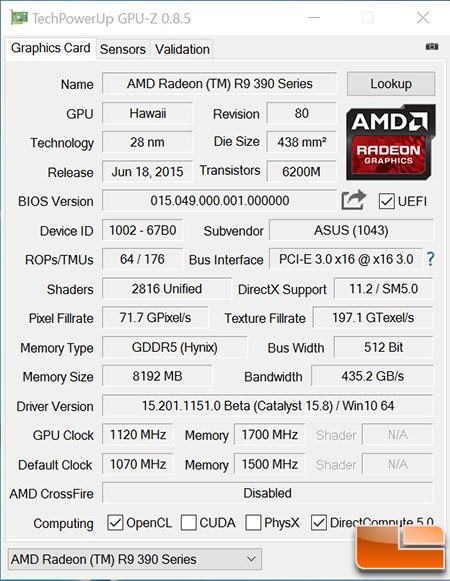

The core clock fluctuated to maintain temps. We observed that in intensive games like The Witcher 3, temperatures hovered around 94 degrees Celsius. The Strix 390X comes with a mild 20 MHz factory overclock. It might’ve been a case of AMD pushing the 290X a little too hard to beat out Nvidia’s erstwhile GTX Titan, but that’s another story. While I’d normally be extremely wary of running any PC components at that kind of temperature, AMD has made it clear that Hawaii cards are designed to operate at these higher temperatures. As with the R9 290X, the PowerTune temperature target for the 390X is a blistering 95 degrees Celsius. Have a look here for those details.ĪMD’s PowerTune mirrors the functionality of GPU Boost on newer Nvidia cards, though without the kind of high frequency scaling we saw on the 980 Ti. Anandtech has extensively analysed the Hawaii architecture in all its variants. GPU-Z provides an overview of the key specs of the Strix R9 390X. However, Asus did make good on its 0 dB gaming promise here: During normal usage and light gaming, the Strix 390X is completely quiet. The Strix 390X features triple 4000 RPM fans, which could get quite loud when spun up to higher speeds. We prefer the matte-black finish on the fans over the gaudier design you see on the MSI Lightning series, for instance. Asus appeared to aim for a stealth-bomber look with the Strix 390X. The Strix 390X came in standard Asus packaging. Our 780 Ti came equipped with a dual-fan DCUII. This is one of the first Asus cards equipped with the Direct Cooling Unit III, which promises “30 percent cooler 0 dB gaming.” The DCUIII is a fairly hefty triple-fan affair. (Because that’s kind of a mouthful, we will henceforth be referring to the card as the “Strix 390X.”) The Strix 390X is clocked 20 MHz higher than the reference 390X. The good folks over at Asus sent over the Strix 390X DCUIII OC.


 0 kommentar(er)
0 kommentar(er)
